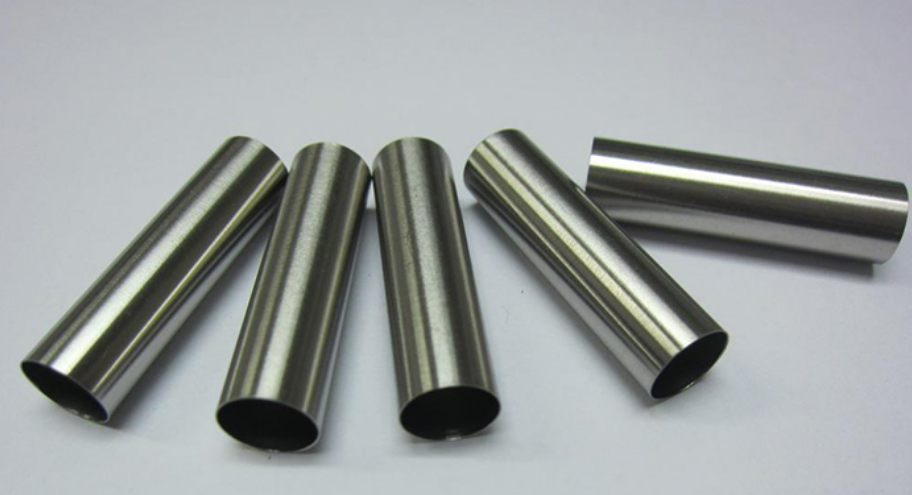Have you ever wondered why the various stainless steel products we use in our daily lives are so durable and able to withstand the test of time? The answer lies in the material they are made of – Acero inoxidable 316. This stainless steel, with its excellent corrosion resistance and high strength, has become the preferred material in many industries. So, what is so special about 316 stainless steel? How does its service life ensure? Next, let’s explore the mysterious veil of 316 stainless steel together.

What are the process characteristics of 316 stainless steel?
The process characteristics of 316 stainless steel mainly include the following aspects:
- High processing difficulty: Due to the high content of chromium, nickel, and molybdenum elements in 316 stainless steel, the material has high hardness and ductility, resulting in relatively high processing difficulty. During processing, it is necessary to control the processing parameters such as cutting speed, cutting depth, etc., to avoid generating too much dust and burrs.
- Excellent welding performance: It has good welding performance. When welding, it usually does not cause intergranular corrosion or cracks. Various welding methods can be used, such as manual arc welding, argon welding, laser welding, etc.
- Boa resistencia á corrosión: The high molybdenum content in 316 stainless steel enhances its corrosion resistance. At the same time, through reasonable heat treatment and surface treatment methods, the corrosion resistance of 316 S/S can be further improved, making it more suitable for use in harsh environments.
- Significant heat treatment effect: After heat treatment, the hardness and strength of 316 S/S will be improved. At the same time, during heat treatment, the quality of grain boundaries can be further improved to avoid intergranular corrosion and other issues.
How to ensure the service life of 316 stainless steel?
To ensure the service life of 316 stainless steel, several aspects can be considered:
- Avoiding contact with harmful chemical substances: It has good corrosion resistance, but if it is constantly exposed to media containing acids, alkalis, salts, and other harmful chemical substances, it may still cause damage to the material. Therefore, when using 316 S/S products, relevant usage requirements should be followed to avoid contact with harmful chemical substances. In addition, if necessary, anti-corrosion treatment can be carried out on the surface of 316 stainless steel.
- Avoiding mechanical wear and damage: Although it has high hardness, it is still prone to mechanical wear and damage. Therefore, when using 316 stainless steel products, actions such as violent impact and friction should be avoided to prevent damage to the material.
- Paying attention to cleaning and maintenance: Regular cleaning and maintenance are very important for 316 stainless steel products. Some stains, corrosion products, or oxides may cause damage or corrosion to 316 stainless steel, so it is necessary to use special cleaners or methods to clean the material regularly.
- Correct storage and transportation: If long-term storage and transportation of 316 S/S products are required, mechanical scratches and wear should be avoided, and contact with other chemical substances should be prevented. At the same time, appropriate storage environments should be chosen to avoid storing in damp, high-temperature environments, etc.
Through the above measures, the service life of 316 stainless steel can be extended and its good performance can be maintained.
Is 316 stainless steel food-grade stainless steel?
Yes, it is generally considered food-grade stainless steel. This is because it has good corrosion resistance and chemical stability, can withstand the erosion of most chemical substances, and will not affect the taste or quality of food. In addition, it contains high levels of nickel, chromium, and molybdenum elements, which can improve the corrosion resistance and antibacterial properties of the material, making it more suitable for food processing, storage, and transportation.
It should be noted that although it is widely used in the food industry, different countries and regions may have different standards and requirements for food-grade materials. Therefore, when using 316 stainless steel as a food-contact material, the correct selection and use should be based on local standards and regulations.
Conclusión
Thank you for reading our article and we hope it can help you to have a better understanding of the process characteristics and service life of 316 Stainless Steel. If you want to find more information about stainless Steel, we’d advise you to visit Sino de aceiro inoxidable.
Como provedor líder de produtos de aceiro inoxidable en todo o mundo, Sino de aceiro inoxidable provides customers with high-quality products such as bobinas de aceiro inoxidable, tubos de aceiro carbono, tiras de aceiro inoxidable, chapas de aceiro inoxidable, fíos de aceiro inoxidablee barras de aceiro inoxidable a un prezo moi competitivo.
 :+86-18621535697
:+86-18621535697  :export81@huaxia-intl.com
:export81@huaxia-intl.com